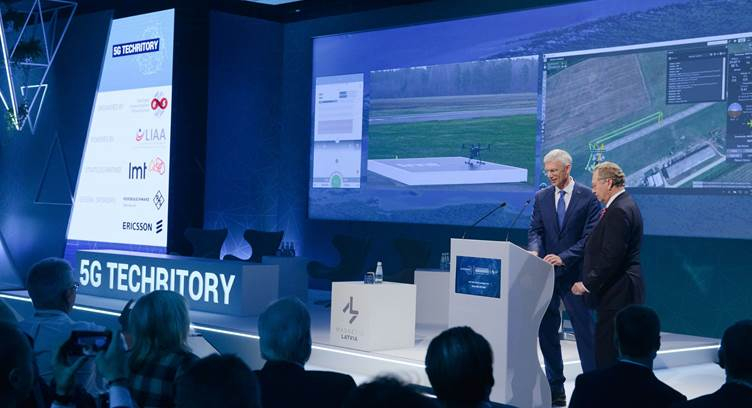Latvian mobile operator LMT has recently completed the first-ever cross-border drone flight conducted entirely over the mobile network. The drone was flown from Latvia to Estonia without losing mobile network connectivity.
The cross-border flight was performed during the LAMPA Conversation Festival within the scope of a discussion on the future role of drones in society.
A live video was streamed at the event demonstrating not only the drone's flight Beyond the Visual Line of Sight (BVLOS), but also its crossing of the Latvian-Estonian border, where it connected to the Estonian mobile network for the final leg of the journey.
This demonstration was a meaningful step toward understanding the technological capabilities of drones, expanding the scope of potential applications. One such use case in active development is linked to Rail Baltica, the international railway project spanning the Baltic states, who are considering 5G technologies for potential use in railway infrastructure. The ability to easily cross borders while maintaining connectivity would make it possible for drones to participate in railway safety measures by monitoring and maintaining tracks that are in border regions.
The flight was started in Latvia and ended in Estonia, with the multirotor drone traveling a total of 8km. The drone was equipped with two SIM cards – one from each country – and switched from one to the other mid-flight as it crossed the border. To accomplish the BVLOS flight, UgCS ground control software was used in combination with a custom-built command and control modem that was built in collaboration with SPH Engineering. The cross border demonstration proved the hypothesis that it is technically feasible to switch networks within a few milliseconds, and provided the confidence to continue with cross-border mobile network-based project development.
Ingmars Pukis, VP and Member of the Board of LMT
Currently, the majority of drone solutions are based on WiFi connections or other frequencies provided for drone management. In contrast to the mobile network, those are limited in their range.






















